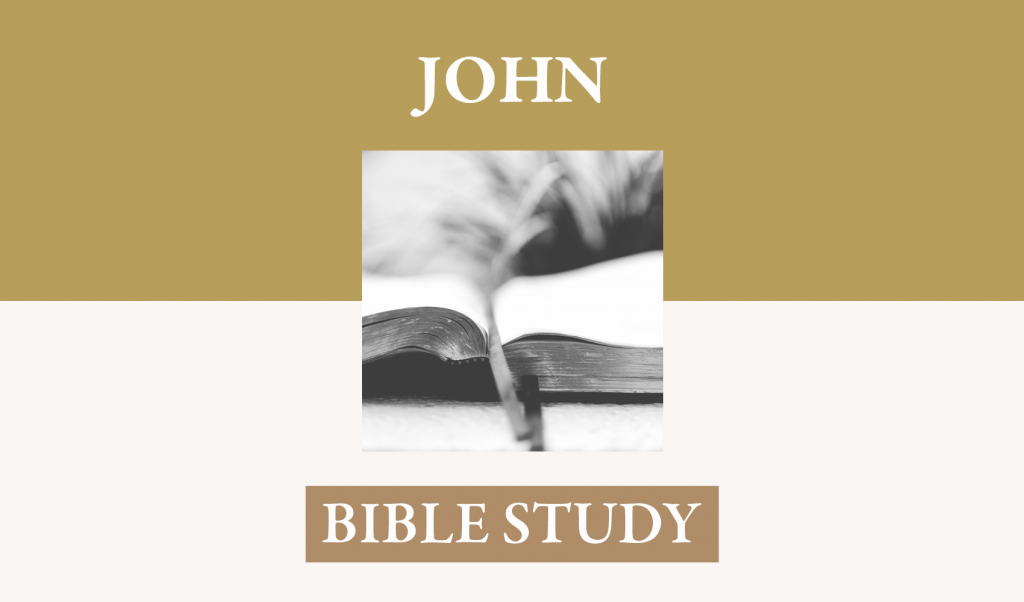John 20
In light of John’s purpose in writing, he emphasized the resurrection of Jesus as an event, though predicted by Jesus throughout his ministry, that was unexpected (John 2:21, 22; 6:49-58; 7:33; 8:14, 21; 10:17, 18; 11:25, 26; 12:23-26; 13:19, 31-33, 36; 14:1-4, 19, 23, 28; 15:26; 16:5-7, 16, 19-22, 28). The prejudices of his most intimate friends and followers were against such a thing and a basic skepticism ruled their hearts. In addition, their grasp of the radical character of redemption had not taken root in their consciousness. This makes the nature of the evidence all the more impressive as it unfolds part by part into one person after another, culminating in John’s poignant pronouncement, “These [signs] are written that you may believe that Jesus is the Christ” (20:31).
I. The Testimony of Mary Magdalene gives the first element of evidence of the veracity of these events in the history of redemption.
Not only does her eyewitness account ring true, but the historical credibility is enhanced in that an effort to produce a deceit probably would have selected a more prominent first witness. She was a woman and formerly of doubtful reputation and emotional stability (Mark 16:9). Someone more easily creditable to the public would have been chosen if the narrative were a piece of literary propaganda.
A. She observed that the stone was rolled away (20:1). John began with the most elementary of all the evidences, but demands, nevertheless, a credible answer: “Who rolled away the stone?”
B. She observed that the tomb was empty (20:2). Her going to the disciples included the report that someone had “taken him away.” Obviously, she had at least peered into the tomb in an amazed curiosity to see that the body was not there. Her first conclusion was not “resurrection” but that his dead body had been removed by someone. This same opinion prevailed even after another visit to the tomb and the observation of other witnesses. She said this at some point to the angels and even to Jesus (13, 15). The projection of this explanation shows that the concept of resurrection did not flood her mind out of some naïve, hope-centered delusion. Her mind gravitated toward what seemed most likely in light of all the things she observed.
C. She mistook Jesus for another person when she first saw and heard him. She spoke to him as if he were the maintenance man in the garden. Jesus must have appeared as normally human (14, 15).
D. She recognized his voice when he called her name. She did not grasp his identity when he asked her the questions, “Woman, Why … Whom?” Perhaps the sound was eerily familiar, but the possibility was so remote that she assumed that a stranger spoke. This is another detail of the genuineness of her report. But from the fact that he knew her name—“Mary!”—and perhaps because she had often heard the inflection of his voice in saying it, she immediately perceived who he was—“Rabboni.”
E. She touched him and clung to him (17). Jesus gave a clear statement that she must not think that now he will stay here. “You must not keep clinging to me in hopes that I will continue here in this physical state.” A. T. Robertson interprets Jesus’ meaning, in light of the type of imperative this is, “The prohibition here reminds Mary that the previous personal fellowship by sight, sound, and touch no longer exists and that the final state of glory was not yet begun. Jesus checks Mary’s impulsive eagerness.” As he earlier told the disciples, he must ascend in order to send the Holy Spirit to effect all of those things put into place by the death of Jesus (John 14:25-29; 16:5-15). Their own future ministries would be done under the power of the Spirit in the new covenant arrangement. Note the tenderness with which he calls “Brothers” these that have most recently forsaken him and fled in the hour of danger.
F. His message to them that he is ascending should spark within them a great confidence that all he said is surely coming to pass. The plan established before the foundation of the world now unfolds with greater clarity. Their own part in it will soon be given pertinence. This message was to be given them prior to his appearance to them.
G. She told the disciples that she had seen the Lord, and, indeed, he had talked to her. She communicated a message from Jesus to the disciples. We learn, however, in the next verse that the disciples were still fearful of the Jews, unable to process the truth of this astounding report and much less able to internalize its meaning for the present and final triumph of Jesus.
H. In Acts 1:9-11, Luke reports the visible ascension of Christ where he will remain until his return in great glory (1 Thes 1:10; 2:19; 3:13; 4:13, 16-18; 5:2, 23; 2 Thessalonians 1:6-10; 2:8; 2 Peter 3:10-13; Jude 24, 25; Revelation 11:15-19; 21:22-27). The manner of his several manifestations to the disciples after the resurrection, however, combined with these words to Mary, indicate that Jesus did not remain on earth in an invisible state or wandering the earth alone, but that he did ascend bodily to the Father. Though his appearances did not give visible manifestation of his heavenly glory, the quickness and ease of his bodily movement (John 20:19, 26; 21:1; Luke 24:15, 30, 31, 36) indicate that he already had his glorified body and still was on mission from the Father in the several instances of his appearing. He had a real body (John 20:20, 21, 27; Luke 24:38, 39; Matthew 28:9) that could move and maneuver in the physical world without hindrance from physical barriers.
II. The Observations of John and Peter – verses 3-10
A. They did not go casually, but they ran. John, the younger of the two, was not concerned about waiting for Peter, but on reaching the burial place as rapidly as possible. He outran Peter.
B. They observed the empty tomb. John arrived first and looked in the tomb. When Peter arrived, he went in, always more aggressive and insistent on learning how things are. He often spoke what the rest of the disciples were thinking, or did what the other disciples wanted to do, but hesitated. When he entered the tomb, John found his boldness increased, and so also entered (8).
C. They observed the orderly nature of the linen clothes in which he had been wrapped, with the face cloth wrapped by itself (5, 6, 7). Someone obviously had taken time to fold these grave clothes neatly. Either Jesus himself had done it, or the angels attending him had done it. Also, it is possible that, in the same way doors provided no hindrance for the entrance of Jesus bodily into the presence of his disciples, so the grave clothes merely collapsed when the resurrection occurred. The clothes in which his body was wrapped just fell flat when his body vacated the tomb. If stone walls and a heavy boulder could not hinder the exit of the body of Jesus, much less would grave clothes need to be removed by physical manipulation. In either instance, it demonstrates that Jesus’ body was gone and had vacated not only the tomb but the dead-body wrappings.
D. The events convinced John of Jesus’ resurrection, but he did not yet see its consistency with the Old Testament Scripture (9).
III. Evidence from other appearances – verses 19-23
A. The disciples [without Thomas] meet together.
1. A miraculous entrance – while the doors were locked, Jesus entered and stood there. The resurrected body clearly had properties that were not manifested in the pre-resurrection body.
2. The body that had been slain – He showed them his hands and side, obviously to demonstrate that this was continuous with the body that had been crucified, speared, and buried.
3. Speaking with authority – Two times he said, “Peace be with you.” Immediately he meant to calm their fears over the startling way in which he had come among them. By his repetition, however, he means to convey more. This was to reiterate what he had said prior to his crucifixion in 16:33. He indeed had overcome the world so they could have peace in him. This peace was twofold: one, they now would grasp the reality of reconciliation with God and so find forgiveness and the dark clouds of divine wrath removed; two, they would be able to move with confidence in their labor in spite of the coming threats and opposition. They knew that they were sent by the sovereign Lord who Himself had experienced the same. Since he came to bring peace under commission of the Father, he gives them the message of that peace that has been established by his obedience to the Father (Luke 2:14; 2 Corinthians 5:14-19; Eph. 2:13-18).
4. He then commissioned them as the Father sent him. The meaning here is rich.
-
-
- Jesus has told them throughout that the Father sent him. It was for a particular purpose that he was sent, and Jesus performed perfectly the task for which he was sent. He knew that, in light of the Father’s eternal purpose, the success of his work, though infinitely difficult to bring to pass, never was in doubt. Eternal decrees find their accomplishment through means consistent with God’s attributes.
- Now, to be another necessary means by which God would fulfill his eternal purpose of saving the ones that the Father had given him, Jesus sends forth his disciples. They will bear the message of his life, death, burial, resurrection, and ascension (John 17:20).
- Their message would then be empowered by the Holy Spirit to call unto salvation his elect (1 Thessalonians 1:4, 5). As Jesus had been raised from the dead by the glory of the Father and the operation of the Holy Spirit (Romans 1:4; 6:4), so will the elect receive spiritual and eternal life according to the glory of God through the effectual work of the Spirit.
-
5. Because he sent them with this implication of assurance, He pointed them to what he already has said about the work of the Spirit. They were already regenerated and indwelt by the Spirit but now would receive a special empowerment to their labors during the apostolic age. They would declare, infallibly through the revelation and inspiration of the Holy Spirit, by their preaching of the gospel (1 Peter 1:25) the terms on which forgiveness would come to sinners. We see Peter do this in Acts 2:37-41; 3:17-21. John wrote a summary of his message in 1 John 1:5-10.
B. The disciples with Thomas (24-29)– After Jesus’ appearance, the disciples were able to locate Thomas and tell him what they had seen. The intrinsic unlikelihood of what had happened still grips the soul of Thomas and he is unwilling to accept a mere report of this strange and startling event. Palpable evidence must be present. People are too prone to delusion, he must have been thinking, and too easily can fabricate something that would give them pleasure. A. T. Robertson remarked, “The doubt of Thomas in the face of the witness of the others was not a proof of his superior intelligence. Sceptics usually pose as persons of unusual mentality.”
1. Jesus condescended to give a specific challenge to the doubts of Thomas and his specific demand for proof (25, 27). One week later, when Jesus appeared to the disciples again, while Thomas was with them, Jesus presented precisely the evidence for which Thomas yearned.
2. Jesus appeared by means of the same kind of miraculous entrance and the same evidence of the body scars. Also, for the third time he affirmed, “Peace be with you.” He had not come into the world to condemn the world. It was already under condemnation and raging in battle against God. He had come to save it, to bring the peace of reconciliation as well as the peace that passes understanding. He has accomplished it and now, as he proclaimed it to them, so will his messengers preach “peace to you who were far off and peace to those who were near” (Ephesians 2:17).
3. Thomas is invited to examine the evidence of his resurrection and the reality of his personal presence by precisely the kind of evidence he demanded. Perhaps this is one of the instances that John had in mind when he wrote, “That which was from the beginning, which we have heard, which we have seen with our eyes, which we have looked upon, and our hands have handled concerning the Word of life—the life was manifested, and we have seen, and bear witness, and declare to you that eternal life which was with the Father and was manifested to us—that which we have seen and heard we declare to you” (1 John 1:1-3).
4. Thomas proclaimed the truth toward which John has been driving by the arrangement of his narrative, “My Lord and my God.” Jesus was indeed the sovereign over Thomas’s own life to do with him as he saw fit. Such an arrangement of absolute obedience would involve no inappropriate subjection of one life to another nor the slightest hint of an idolatrous adoration, for Jesus, the Lord of Thomas, is also God over all (Romans 9:5).
5. Jesus then established the reality that this same kind of belief Thomas has shown upon the seeing of Jesus will be shown by those that do not see him. The power of the word (made effectual by the Spirit) will communicate such a sensible reality that the same strength of cognitive certainty, moral submission, and joyful hope will characterize the faith of future believers as was present to the disciples at that moment. Peter certainly recalled this when he wrote to those that had “obtained a faith of equal standing with ours” (2 Peter 1:1) and when he announced, “Though you have not seen him you love him. Though you do not now see him, you believe in him and rejoice with joy that is inexpressible and filled with glory, obtaining the outcome of your faith, the salvation of your souls.” (1 Peter 1:8, 9).
III. The nature of faith
A. The content of faith
1. Christologically – all events from pre-existence through ascension are in the content. Jesus is God, coessential, co-eternal with the Father, forever dwelling alongside him with perfect glory and splendor, always generated by the delight and love of the Father. For our sake and to the Father’s glory he embraced into the singularity of his personhood our nature.
2. Theologically – God’s nature is triune and that each incremental part of salvation has to do with divine grace and effectual action of the respective persons in this eternally blessed God.
3. Soteriologically -The sin issue dwarfs any other perceived difficulty we have. For that reason, the cross and resurrection must be embraced as the only possible remedy. Look at verse 17 in this light. Jesus finished his work and on that basis ascends to the Father in his role as the Christ to intercede for us and, as it were, plead the merits of his blood for the forgiveness of our sins.
B. The grace of faith
1. The belief of the disciples developed incrementally in light of the historical unfolding of redemption in the life of Jesus; Their belief of each aspect, however, depended on the purpose of God and the work of the Spirit – (John 3:3, 11-15; 6:44, 60-65; 10:25-30; 14:16, 17;16:7-11). Apart from the decree of the Father, (John 17:2), the obedience of the Son (17:4), and the effectual work of the Spirit in giving life to dead hearts, sight to blind eyes, hearing to deaf ears, and strength to lame limbs (16:14, 15), they would not believe even if one rose from the dead (5:36-47; Luke 16:31).
2. The evidence that brings about faith is not the historical alone, but that combined with its redemptive purpose. By the operation of the Spirit infusing his transforming power into the truth of the word, we know we are sinners who need just such a Savior (29, 31). As the disciples grew in their understanding even in the presence of Jesus Himself and hearing his teaching, so will the hearer of God’s word often be brought to saving faith through an extended contact with truth and the incremental construction of redemptive reality that finally reaches a critical mass and subdues such a seeker to Christ. Saving faith also is followed by an increase in the knowledge of God and of the Lord Jesus with the goal being unity in the faith and the knowledge of the Son of God (Ephesians 4:13).
IV. Observations
A. God intends that we believe on the basis of Scripture’s witness and the Spirit’s confirmation of the work Jesus came to do concerning sin, justice, and wrath (16:7-11; 19:28, 36 and 20:9; 1 Peter 1:12).
B. The entire character and content of the biblical narrative defies any consideration of its being a fabrication; this historical certainty confirms the necessity and exclusivity of Christ’s redemptive work.
C. Nothing remains to be done for the redemption of God’s people [cf. 2 Cor. 5:14-21; Hebrews 10:1-14]; His ascension seals all.




















